Lumion BLOG
Feel the space with Lumion
How to bring story and emotion to architectural animations
TweetShareShareShareArchitectural studio and property marketing agency, Ten Over Media, breaks down communication barriers between architect and audience by infusing emotion and storytelling into every animation.
When is a fireplace more than just that, a fireplace?
What does it mean when a client looks at a living room? A kitchen? A bedroom?
What does “home” mean when producing architectural videos?
These are just a few of the difficult questions that Ten Over Media tackles when rendering 3D animations. Instead of simply showing a room, a building facade or other details, Ten Over Media uses storytelling and emotion to create powerful connections with audiences.
“Our job is to find a relationship between storytelling and visuals. It is this relationship that can remove the wall between designers and clients because, all of a sudden, you’re not just seeing a fireplace in a video. You’re showing a welcoming home. But still, is it enough to remove the wall between designers and clients?” asks Mathieu Anfosso, Creative Director at Ten Over Media.
So, let’s see what makes them stand out.
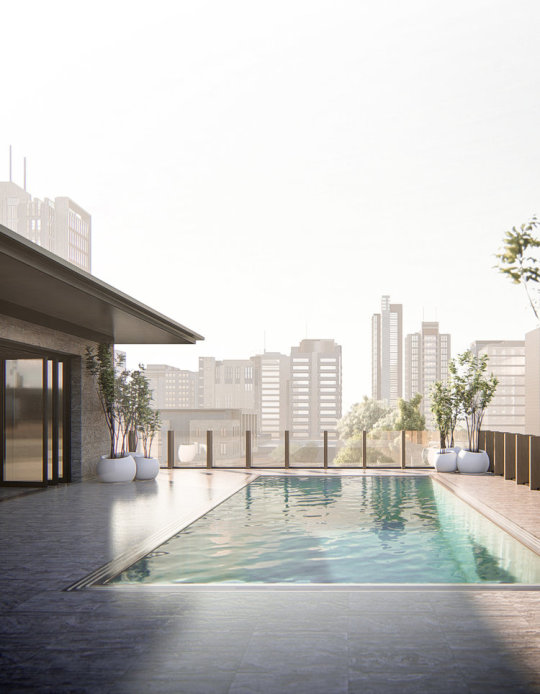
Render of the rooftop pool at Hotel De Syeres
As the 3D visualization and filmmaking department of Ten Over Studio, an interdisciplinary firm consisting of architects, landscape architects, interior designers, public safety experts, artists and more, Ten Over Media takes a unique approach when making hospitality marketing campaigns and raising interest in soon-to-be-built locations.
In this blog post, we speak with Mathieu Anfosso to uncover some of the agency’s 3D architectural movie-making processes.
Three-phase workflow for creating videos
Focusing on hospitality projects and developments (boutique hotels, resorts, etc), Ten Over Media produces 3D images and films using a three-phase approach, including video development, production and ready-to-broadcast video.
Ten Over Studio 2016 Showreel
Video development
With SketchUp as the main modeling program, the filmmakers at Ten Over Media begin each project by fine-tuning the 3D model for import into Lumion. In general, this will involve some basic site work and material setup, detailing and so on. They then plan the video’s length, aspect ratio and style, as well as conducting some initial audio and shooting tests.
Keep in mind that all this work is conducted before creating the first video draft.
Production
Once the model is ready in Lumion, complete with textures and context, the next step is to conduct some shooting sessions of the 3D project. This step includes rendering a few shots, editing and adding minor effects.
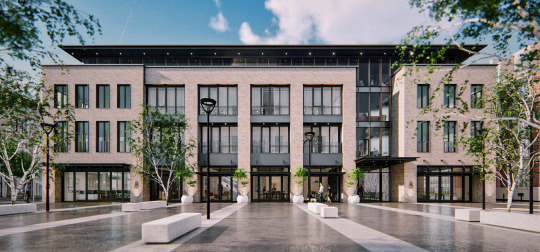
Shot from the Hotel De Syeres Social Media Ad
“We usually end up using a third or half of the shots from the draft. This gives flexibility to our editing process. We refine the details of the 3D model that are visible in the draft and start digging deeper into the sound effects and sound mixing. Then, we export another draft in high resolution once we’re ready to share it with the client,” said Mathieu.
Ready-to-broadcast video
At this stage, the video is “locked.” This means that the client is happy and has no further changes to request. Small issues are also fixed at this stage, while everything is refined and extra effects are applied.
The last step is to export in high resolution, and while this can take some time, Mathieu states that “Lumion makes all three steps faster and easier than any other program out there.”
By now, you may be thinking, “But we already do that here.” So what’s their secret?
What makes a “great” architectural video?
For Ten Over Media, doing things differently and giving 110% effort are essential for every film they produce. And in the field of hospitality marketing, where audiences interpret spaces on a highly personal level, the creative team isn’t asking, “What makes a great architectural video?”
Instead, they approach projects by asking the question, “What makes a home?”
Social Media Ad for the Hotel De Syeres
“We believe that honest design comes through an emotion we translate to our audience,” Mathieu said. “So we ask, ‘what makes a home? Why would I want to go there?’ We think it’s linked to emotions; it’s what we’re all looking for in the end. For us, it’s about bringing our own memories and our own attachments to the same place. A candle by a window. A table set up. A messy bed. Our job is to create those souvenirs for the audience.”
“We like to place our films in an art of intimacy with living spaces. This is done by designing an area of emotion around each object or wall. We want the viewer to be emotionally affected by the space.”
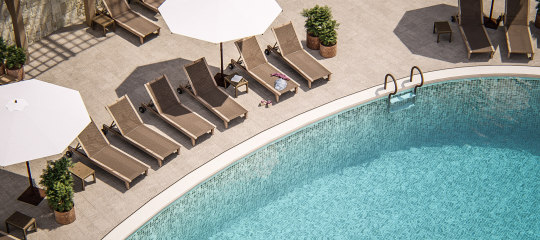
Poolside at the Cava Robles RV Resort
One way to affect viewers, according to Mathieu, is to remember your audience. If your audience is not comprised of architects, for instance, then showing architecturally significant details might not influence the average Joe and Jane to be engaged with the property.
“That’s really how it started. We said we’d focus on having a blend between architectural shots and non-architectural shots. You’ll see a shot of a really pretty pillow with nice lighting, and this will evoke many things in someone, rather than a shot of an architectural beam.”
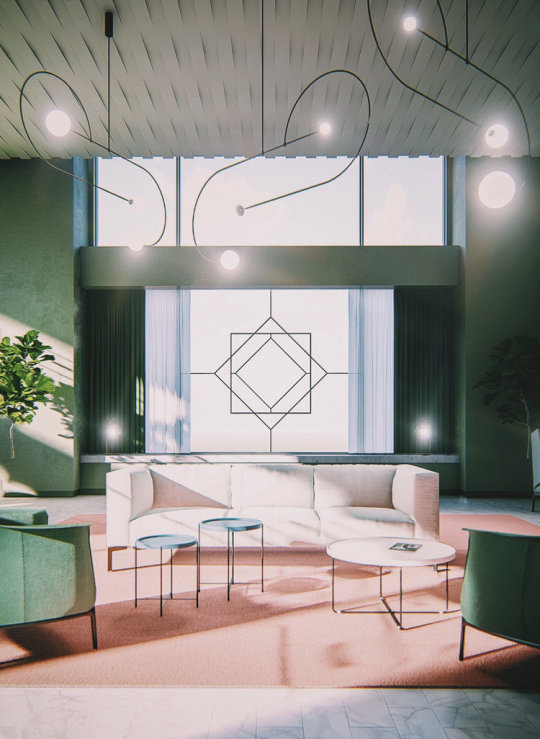
Lounge at the Hotel De Syeres
“Take this as an example; when your audience visits a space, most aren’t taking pictures of architectural details. They are taking pictures of flowers, of themselves having a meal in the dining area, of the swimming pool, and so on. You can have shots of architecture in the video, but it might be the simple shot of a soft pillow or a welcoming fireplace that makes a viewer think, ‘I want to go there.’”
Ten Over Media’s tips and tricks for making animations
According to Mathieu, this is Ten Over Media’s secret: “We teamed up with a movie production team.”
Showing emotion is only half the story, and part of their success in making animations comes from partnering with an experienced film director who spent the last 10 years developing stories on live-action sets.
Community Farm to Table Public Market in San Luis Obispo, California
“Because Lumion is such a wide and complete tool, the first task is to create boundaries in the 3D world,” Mathieu said. “Our director worked for many years in advertising and film. He knows how a set works, how to light something, etc. For example, similar to how you’d light a subject in a real set, we’re re-creating these lighting arrangements in Lumion, essentially limiting the 3D world to a small, controlled area. Also, many of the things you’d find in photography and cinematography books are easy to implement in Lumion, and very effective”.
Some of Ten Over Media’s other tips and tricks for story-based, emotion-driven animations include:
“Start small. Maybe play around in Lumion for a little bit. If you’ve got a story to tell, the inspiration will come to you easily. Try out some shots; see what works and what doesn’t.”
“Don’t overuse effects. The effects are amazing and each one actually is great to use, but don’t use them all at once. Be mindful of what you’re trying to say and what your story is. Only use the tools that will help you convey your story.”
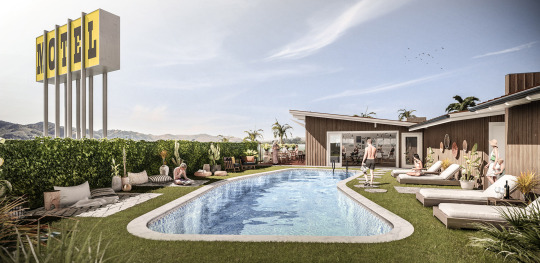
“Always focus on your storyline. It’s never about what you can add, it’s always about what fits best. You need to ask yourself, ‘Does this help my story?’ every time you’re doing something.”
“When you run into an issue, be creative. Lumion will always have an option to achieve what you want to do, but sometimes you must take a little detour to find it.”
Mathieu’s last piece of advice is to “let Lumion do its magic. Seriously, it’s pretty great at it.”
Thinking outside the box
Mathieu and Ten Over Media take pride in thinking “outside the box”, from recreating real-life movie sets in the Lumion 3D world to using an experienced director from the industry for guiding animation production.
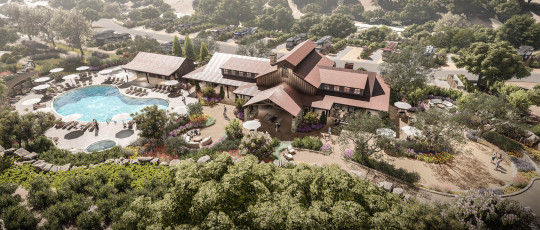
The result — 3D architectural animations that are unique in style and voice, with engaging composition and audience-centric visuals. It’s a different way of presenting buildings and architecture, and it sure keeps you hooked.
For additional advice and tutorials for creating better videos in Lumion, make sure to check out these additional resources:
- Lumion Animations Knowledge Base
- 10 Tips for making a great movie in Lumion
- Explore how this 3D interior animation render was made
Special thanks to Mathieu Anfosso and Ten Over Media for contributing to this story. All media in this post are credited to Ten Over Media.
#Lumion